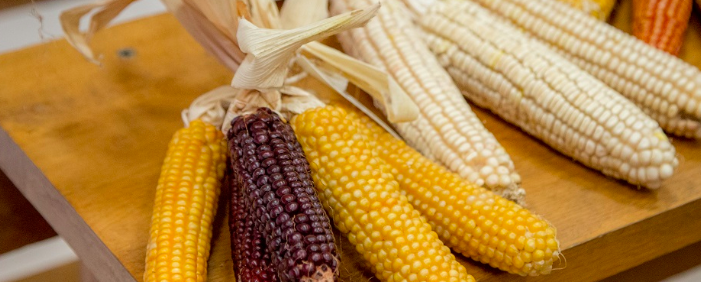
Plants like animals multiply their cells throughout their lives. The genetic material is copied, copied, generally identical. But sometimes a small change can induce interesting new features! This is Darwin’s theory on the evolution and adaptation of species. Today, with the explosion of knowledge in genetics, it becomes possible to improve grain more precisely, but also many fruits and vegetables, to meet the new expectations of consumers.
“Since the beginning of agriculture, man has more or less consciously used two major concepts: evolution through the natural mutations that appear in each cell cycle and the inheritance transmitted during sexual reproduction ,” explains Fabien Nogué, director. research at INRA. The genomes of plants are not etched in stone. “.In short, the natural instability of the genome is the very basis of the improvement of the plants … Thus, the current maize is for the ancestor the teosinte, which possessed less than twenty small seeds not assimilable by the man or the animals because the thickness of their envelopes. With natural mutations and successive selections, corn is today composed of a 500-grit ear very popular in food; it has become the most widely grown cereal in the world. Another example of spontaneous mutation: the difference in color between green grapes and red grapes results from a spontaneous mutation 3,000 years ago. Much more recently, in 1975, a mutation that controls the accumulation of beta-carotene appeared in cauliflower!
“There are, for example, 90,000 genes in wheat,continues Fabien Nogué. Statistically, in a wheat field of one hectare, all genes have at least one natural mutation. But few mutations affect a gene of interest – that is to say, responsible for a character considered interesting. “. Hence the use of chemicals to induce and increase the number of mutations, a technique used since the 1950s. Currently, thousands of mutant varieties are cultivated worldwide, but their placing on the market requires heavy research and development.
Sequencing and molecular scissors
Today, two factors are changing the game in genetics. First, the sequencing equipment (which identifies and “reads” all genes of interest) is technically and financially accessible for all species and not just for field crops. Then, “molecular scissors” are able to precisely target and modify genes, creating a mutation identical to that which nature can do.
Various tools developed over the last ten years among molecular scissors, including the latest CRISPR CAS *, can inactivate a gene or slightly change the DNA of an interesting gene.”It is possible to change the shelf life of the tomato, change its shape or make it resistant to viruses , says Fabien Nogué. Beta-carotene can also be made to produce seeds or fruits and vegetables that do not contain beta-carotene . This is also a project that we would like to launch on the potato. “
The use of these molecular scissors may also remove some toxic compounds such as erucic acid in cabbage (causing heart damage when ingested in large quantities), acrylamide in potato (high temperature carcinogen ), but also allergens in peanuts or wheat (the famous gluten).
In the United States, Paris mushrooms that do not brown, potatoes that produce less acrylamide or oils with a modified fatty acid profile are already on the market. In Europe, the regulatory status of these tools is not yet defined, even when the change is similar to a natural mutation. So there are still no plants improved with these new techniques on our plates, but research is moving fast, including in France.
GENIUS, flagship project of INRA
France has developed the GENIUS * project for the future in 2012. It brings together 10 public partners in the fields of life sciences and social sciences, as well as 5 private sector companies specializing in the creation of varieties and / or biotechnologies. Fabien Nogué, very involved in the GENIUS program, says: “It has enabled us to acquire and improve cell engineering methods for 9 cultivated species (wheat, maize, rice, rapeseed, tomato, potato, poplar, apple tree, rose bush). Being able to turn off genes or wake up others without changing the rest of the genomeopens up new opportunities for farmers as well as consumers. 15 laboratories master the technology. It would be a shame not to use and test the powerful tools that are available. “.
good article very hopeful